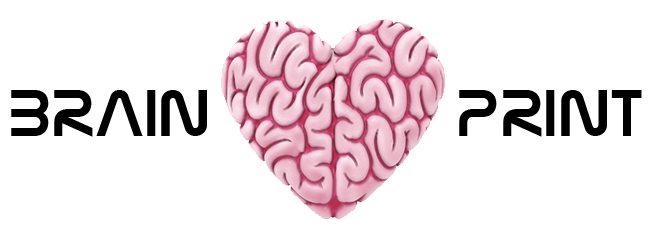Print and Neuroscience
Emily Dickenson once said, “The brain is wider than the sky.” Of course she was right. The statement is as true today as it was then. The human brain is as much a mystery to us as are the cosmos. In fact, The Society for Neuroscience wrote on their website that “The human brain — a spongy, three-pound mass of tissue — is the most complex living structure in the known universe.”
The brain controls, manages, and interprets every aspect of the human body. From hunger to pain, to pleasure, sensation, and memory—all of it must be brought through the brain. It is a combination of all of these things along with the brain’s interpretations of these things that make us up as individuals.

You might be aware that print is a lifestyle choice. In this three part series, I’d like to look at print, not only how it has helped make us what we are today, but how it can continue to mold us moving forward into a more techno-rich environment. By the end of this series I hope you will come to understand and appreciate the positive effects that print has on the brain and how we can make it into a lifestyle choice by incorporating it in our day-to-day lives as much as possible.
There is an amazing book written by bestselling author David Linden called Touch: The Science of Hand, Heart, and Mind. In this book Linden explains how touch is ““a central aspect of our human experience.” In fact, touch makes up a huge amount of sensory input in our brains. You may be wondering, what exactly does this mean? Well, it means that our experiences with touch are not just an important part of the human picture, but in fact it is an essential part of it. In his book Linden explains that touch, in fact, has a direct relation to the parts of our brains that experiences emotion.
You know where I’m going with this, right? Given Linden’s research, how can we consciously look past the great impact that the print industry has on the human brain? Even more so than the digital. In a recent article published by Forbes, author Roger Dooley explains: “neuroscience research shows that paper-based content and ads offer special advantages in connecting with our brains” (you can read this article here).
According to Dooley’s article, there are multiple studies that have been done that conclude that print is far more effective in learning, creativity, comprehension, retention, and memory receptacles in the brain than any other form of media.
It isn’t just by touch that print holds such an important place in our civilization. Thoreau once said, “Before printing was discovered, a century was equal to a thousand years.” Can you imagine how different society would be today if we did not have print to document and teach us science, art, and history? It would be a different world. In the next part of this series I plan to look at the vital roll print has played in the growth and maturity of our civilization as we know it today. I hope you’ll join me!
Until then, happy printing 🙂
 Jennifer Grace is a proud to be millennial who works as a Sales & Marketing Specialist at The Dingley Press. Dingley specializes in catalog printing and Jen is lucky enough to be stationed in the manufacturing facility where the presses run 24/7. When it comes to print and catalogs, one thing is for sure, Jen does not lack enthusiasm. To read more of her articles you can check out Dingley’s blog site or connect with her on Twitter, LinkedIn, and Facebook.
Jennifer Grace is a proud to be millennial who works as a Sales & Marketing Specialist at The Dingley Press. Dingley specializes in catalog printing and Jen is lucky enough to be stationed in the manufacturing facility where the presses run 24/7. When it comes to print and catalogs, one thing is for sure, Jen does not lack enthusiasm. To read more of her articles you can check out Dingley’s blog site or connect with her on Twitter, LinkedIn, and Facebook.











